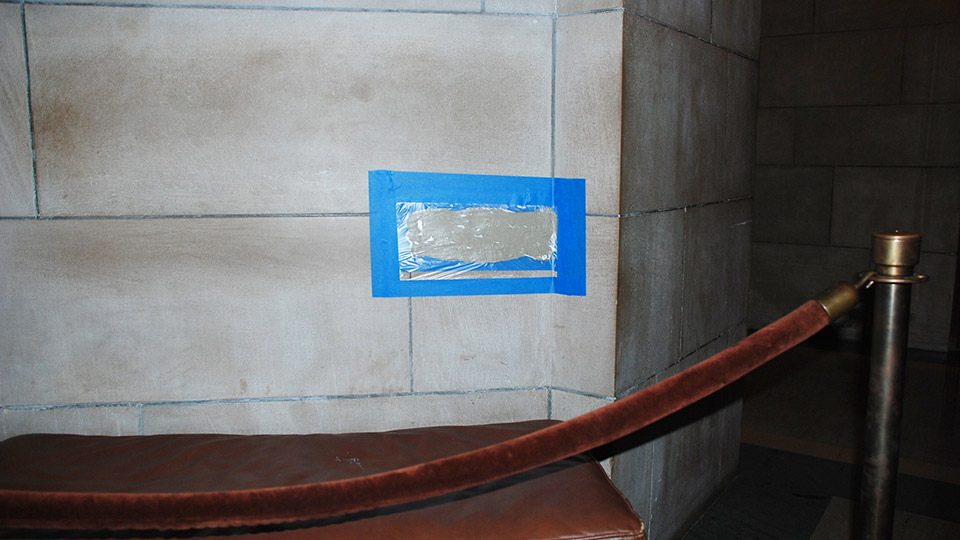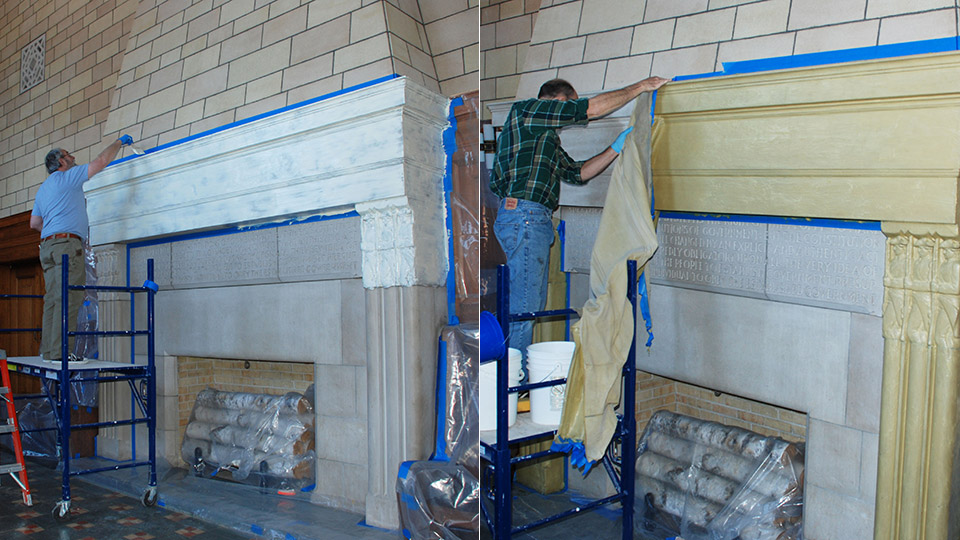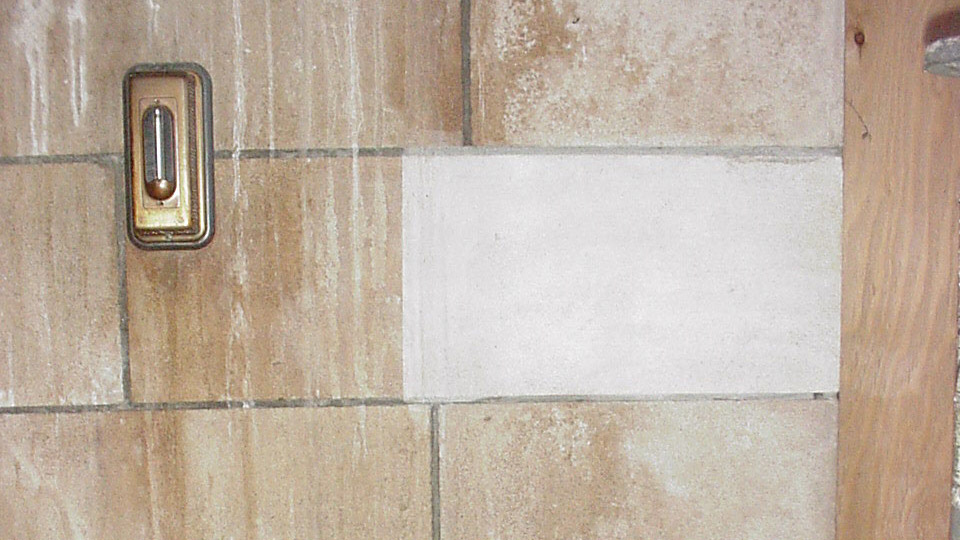
Poultice application: A mason tests a spot to remove body oil from the wall behind an elevator bench.

An integrated latex/detergent poultice product was successful in cleaning the water stains and overall soiling on the walls of the George W. Norris Legislative Chamber with minimal negative impact.

Mineral deposits from leak are cleaned.